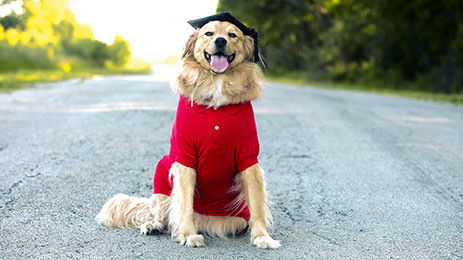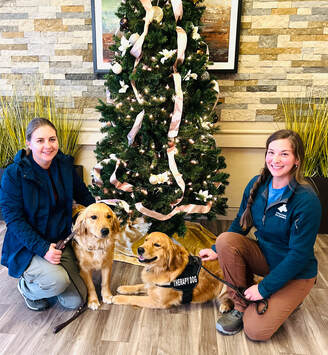Necessary Tips for Successful Dog Training: An Overview for Pet Dog Owners
Efficient pet training is a multifaceted process that requires a calculated technique customized to both the pet dog's personality and the proprietor's purposes. Secret parts such as developing regular commands, using favorable reinforcement, and promoting very early socializing play essential duties in cultivating a well-adjusted canine friend. Several family pet proprietors encounter challenges that can hinder progression, leading to stress and unpredictability. Understanding exactly how to navigate these obstacles can significantly boost the training experience, inevitably transforming the partnership in between owner and dog. What are the vital techniques that can be employed to guarantee success in this endeavor?
Comprehending Canine Behavior
Understanding dog habits is important for efficient training and cultivating a harmonious relationship between dogs and their proprietors. dog training. Pets communicate mainly through body language, vocalizations, and actions, making it important for proprietors to analyze these signals precisely.

Socialization plays a significant duty in pet actions; direct exposure to different atmospheres, people, and other animals can significantly impact a pet dog's personality. Moreover, factors such as type attributes and specific personality ought to guide training approaches, as some breeds may have details behavior characteristics that require tailored approaches. By recognizing these elements, proprietors can develop an encouraging atmosphere that encourages positive habits, resulting in effective training outcomes and a much deeper bond with their family pets.
Establishing Regular Commands
Reliable communication with your pet begins with developing constant commands. This fundamental aspect of training is essential for promoting understanding between you and your pet. Consistency in the commands you make use of ensures that your dog can dependably link particular words or expressions with the desired habits.
When picking commands, choose clear, distinctive words that are easy to state and differentiate from one an additional. Avoid utilizing similar-sounding commands that may puzzle your pet. As an example, utilizing "rest" and "remain" is appropriate, but "sit" and "struck" can bring about misconceptions.
Additionally, keep the same tone and volume for each and every command. Pets are delicate to singing signs, so differing your tone can develop complication.
It is equally crucial to guarantee that all family members are on the same web page regarding the commands utilized. A united front in command use will certainly stop mixed signals and reinforce the learning process.
Favorable Reinforcement Methods
The power of positive support in pet training depends on its capacity to encourage wanted habits through incentives and appreciation. This method is grounded in the concept that actions followed by desirable results are much more likely to be duplicated. By integrating favorable reinforcement into your training routine, you can successfully shape your pet dog's actions in a useful manner.
To apply favorable reinforcement, it's necessary to recognize what motivates your pet, whether it be treats, toys, or verbal appreciation. When your canine executes a desired activity, such as remaining on command, instantly compensate them with a treat or affection. This organization between the command and the favorable result reinforces their understanding.
It's important to timing the incentives correctly; supplying the reinforcement within secs of the desired habits aids your pet make the link (dog training). Additionally, consistency is crucial-- ensure that all family participants use the exact you can try these out same commands and incentive systems to avoid confusion

Gradually, you can decrease the regularity of deals with as your dog discovers the actions, transitioning to praise or intermittent benefits. This technique not just fosters a solid bond in between you and your pet yet also promotes a positive knowing setting, making educating an enjoyable experience for both.
Socialization and Interaction
Regularly subjecting your pet to a selection of settings, individuals, and various other pets is critical for their social development. Socialization ought to begin early, ideally during the essential window of 3 to 14 weeks, when pups are most responsive to brand-new experiences. Nonetheless, older pets can additionally take advantage of ongoing socializing initiatives.
Introduce your canine to different settings, such as parks, pet-friendly stores, and city locations. This direct exposure assists them adapt to different stimuli, minimizing stress see here now and anxiety and worry reactions. Encourage positive interactions with other pets and individuals, making certain that these experiences are risk-free and controlled to promote confidence.
Make use of organized playdates with well-mannered pets, as this can improve your dog's social skills and show them suitable actions. Obedience classes and training sessions additionally offer outstanding possibilities for socialization, permitting your canine to connect with others in a monitored setting.
Screen your pet's body language throughout interactions, as this will certainly help you determine their comfort degree. Gradually enhance direct exposure to more tough circumstances while guaranteeing that each experience is positive. A well-socialized pet is extra likely to exhibit balanced behavior, making them a pleasure to have in any setup.
Resolving Common Training Challenges
Every pet dog proprietor will come across training challenges eventually, regardless of their pet's age or socializing level. Determining usual concerns such as stubbornness, interruptions, and terror can help in establishing efficient approaches for improvement.

Slowly present distractions as the canine becomes extra skillful in commands. Short, constant training sessions are also efficient in preserving attention.
Terror can prevent a pet's discovering process. Progressive desensitization to the source of anxiety, coupled with favorable support, can help relieve anxiety. Persistence is critical; never force a canine into a situation that causes distress, as this may intensify the issue.
Inevitably, understanding and addressing these typical obstacles with an organized strategy will foster a much more effective training experience, strengthening the bond between pet dog and owner while promoting reliable learning.
Final Thought
In recap, successful pet training counts on an extensive understanding of canine behavior, the facility of consistent commands, useful reference and the application of favorable reinforcement methods. Socializing plays an important function in establishing well-adjusted family pets, while resolving typical training challenges needs perseverance and versatility. By applying these essential approaches, pet proprietors can foster a strong bond with their canines and promote desirable habits, eventually causing a harmonious partnership in between human beings and their canine companions.
Comprehending dog actions is essential for efficient training and fostering a harmonious partnership between canines and their owners.Socializing plays a substantial duty in pet behavior; exposure to different environments, individuals, and various other pets can substantially influence a dog's character.The power of favorable support in pet dog training lies in its capacity to motivate wanted actions with benefits and appreciation. By integrating favorable support into your training program, you can successfully shape your pet's actions in a constructive manner.
In summary, successful canine training relies on a thorough understanding of canine behavior, the establishment of constant commands, and the application of positive support strategies.